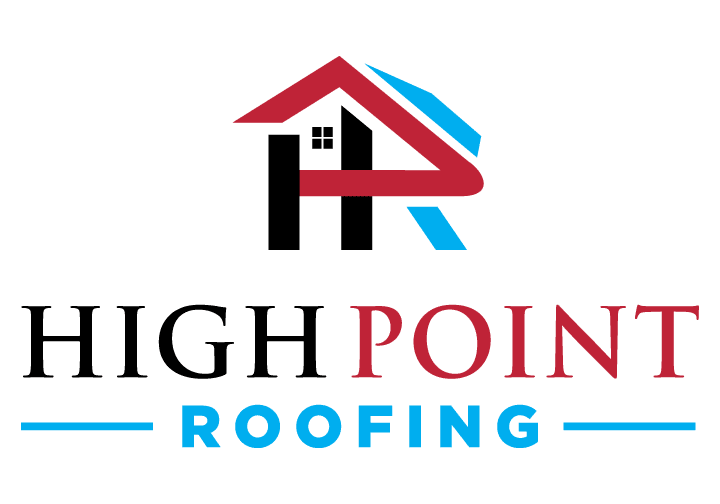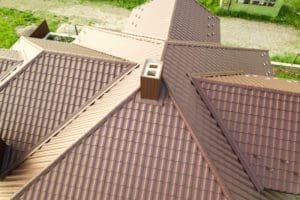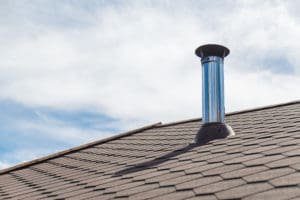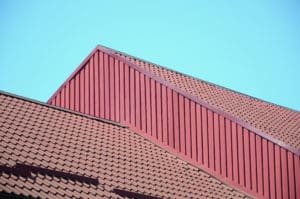As the winter season approaches, homeowners must prepare for the challenges that cold weather brings, particularly when it comes to maintaining the integrity of their roofs. Snow, ice, and freezing temperatures can unleash havoc on your roofing system, leading to potential damage that may require immediate attention. This article aims to equip you with essential tips for emergency roof repairs during winter, ensuring that your home remains safe and sound throughout the season.
Understanding the Impact of Winter on Your Roof
The Role of Snow and Ice in Roof Damage
During winter months, heavy snow accumulation can pose a significant threat to the structural stability of your roof. As snow falls, it can gradually build up, creating a heavy load that some roofs aren’t designed to support. This accumulation can lead to sagging or even roof collapse in extreme cases. In fact, roofs that are flat or have a low pitch are particularly vulnerable, as they may not shed snow as effectively as steeper roofs. Regularly clearing snow off your roof can help mitigate this risk, but it’s essential to do so safely to avoid injury or further damage.
Furthermore, ice can form along the edges of roofs and gutters, especially when eaves are not well insulated. Ice dams can trap water on your roof, leading to leaks and further damage to shingles, flashing, and the underlayment. The trapped water can seep into the roof structure, causing mold growth and wood rot, which can be costly to repair. Homeowners should consider installing heat cables or improving insulation in their attics to help prevent the formation of ice dams and protect their roofs from winter’s harsh effects.
How Cold Temperatures Affect Roof Materials
Cold temperatures can be detrimental to various roofing materials. For instance, asphalt shingles may become brittle and crack when exposed to freezing conditions. Metal roofs, while durable, can also develop issues if proper precautions are not taken, such as expansion and contraction leading to loosening fasteners. Additionally, the cold can affect the adhesive properties of roofing materials, making it more challenging for shingles to bond properly during installation. This can lead to premature wear and tear, necessitating more frequent repairs or replacements.
Understanding how these conditions affect your roof is crucial for maintaining its longevity. Homeowners should consider these factors when planning maintenance and repairs during the winter months. Regular inspections, especially before the onset of winter, can help identify potential vulnerabilities. It’s also wise to consult with a roofing professional who can provide tailored advice based on your specific roof type and local climate conditions. By being proactive, you can ensure that your roof remains resilient against the challenges posed by winter weather.
Preparing Your Roof for Winter

Regular Roof Inspection and Maintenance
One of the best ways to prepare your roof for winter is to conduct regular inspections and maintenance, ideally in the fall before heavy snowfall begins. Check for loose or damaged shingles, as well as any signs of wear and tear on flashing and seals around chimneys and vents. It’s also wise to look for any signs of mold or algae growth, which can indicate trapped moisture and lead to further deterioration if not addressed promptly.
Clearing debris from your roof and gutters is essential to prevent water accumulation that can freeze and create ice dams. Removing leaves, branches, and other debris can enhance water flow off the roof and reduce the risk of ice buildup. Additionally, consider installing gutter guards to minimize the amount of debris that can enter your gutters, making maintenance easier and more effective throughout the winter months.
The Importance of Proper Insulation
Proper insulation is another critical factor in winter roof maintenance. Insulation helps to regulate attic temperatures, preventing heat from escaping and subsequently melting snow on the roof. When the snow melts and refreezes, it can result in ice dams, which can cause significant damage. Inadequate insulation can lead to higher energy bills as your heating system works harder to maintain a comfortable temperature in your home.
Consider consulting with a professional to assess your insulation needs. Proper ventilation in conjunction with insulation will contribute to a healthier roof system, reducing the chances of winter-related roof problems. Additionally, installing a radiant barrier in your attic can further enhance energy efficiency by reflecting heat back into your living spaces, ensuring that your home remains cozy without excessive energy consumption during the cold winter months.
Identifying Common Winter Roof Problems

Ice Dams and Icicles: What You Need to Know
Ice dams form when warm air from your attic melts the snow on the roof, causing it to run down to the eaves where it gets colder and refreezes. This cycle creates a dam of ice that prevents water from draining properly, which can back up under shingles and lead to leaks.
Additionally, icicles can form on the edges of the roof and gutters, being a visible indicator of an ice dam. These icicles can be hazardous, falling and injuring people or pets below. It’s vital to keep walkways and driveways clear of these hazards and address the underlying issues causing them. Preventative measures, such as improving attic insulation and ventilation, can significantly reduce the risk of ice dams forming. Insulation helps maintain a consistent temperature in your attic, while proper ventilation allows cold air to circulate, keeping the roof surface cold enough to prevent melting snow from refreezing at the eaves.
Signs of Roof Leaks and Water Damage
During winter, water leaks can often go unnoticed until they lead to significant damage. Look for signs of leaks such as water stains on ceilings and walls, peeling paint, or mold growth. Inside your home, attics can show evidence of water damage through stained insulation and wet spots.
Detecting roof leaks early is crucial as it can prevent more extensive and costly repairs down the line. If you notice any signs, it is advisable to take immediate action to identify and fix the source of the leak. Regular roof inspections, especially after heavy snowfall or storms, can help catch potential issues before they escalate. Homeowners should also be vigilant about checking their gutters and downspouts, as clogged drainage systems can exacerbate water pooling on the roof, increasing the risk of leaks and structural damage. Investing in a professional roof inspection can provide peace of mind and ensure that your roof remains in good condition throughout the winter months.
Emergency Roof Repair Tips

Safe Removal of Snow and Ice from Your Roof
If snow or ice accumulates excessively on your roof, it may be necessary to remove it to prevent damage. However, safety should be your top priority. Always use a roof rake with a long handle to remove snow from the ground, avoiding climbing onto the roof unless absolutely necessary. When using a roof rake, it’s best to start from the edge of the roof and work your way up to avoid dislodging too much snow at once, which can create a dangerous avalanche effect.
For ice, use de-icing products that are safe for roofs, such as calcium chloride. Never use metal tools like shovels, as they can damage shingles and other roofing materials. Additionally, consider installing heat cables along the eaves and valleys of your roof to help prevent ice dam formation in the first place. These cables can melt snow and ice, allowing water to flow off the roof rather than pooling and causing leaks.
Temporary Fixes for Roof Leaks
In the event of a leak, there are temporary fixes you can implement until a professional can assess the damage. First, place buckets or containers under leaks to catch dripping water. You can also use tarps on a roof to cover exposed areas and prevent further leaks when it is safe to do so. Make sure to secure the tarp with heavy objects or ropes to prevent it from blowing away in the wind, as a loose tarp can create additional hazards.
Applying roofing tape or tar can temporarily seal small leaks. However, these solutions are not permanent and should only be used as stopgap measures until more comprehensive repairs can be made. It’s also wise to inspect your attic for signs of water damage, such as discoloration or mold, as this can indicate the extent of the leak. Documenting the damage with photos can be beneficial when discussing repairs with your insurance company or roofing contractor, ensuring you have a clear record of the issues at hand.
When to Call a Professional

Assessing the Severity of Roof Damage
Determining when to call a roofing professional is essential in managing roof repairs. If you notice extensive damage, such as large areas of missing shingles, significant sagging, or multiple leaks, it’s best to consult with an expert.
Professional roofers can provide a thorough evaluation and recommend appropriate repairs or replacements based on the specific condition of your roof. They possess the knowledge to identify underlying issues that may not be immediately visible, such as water damage to the roof deck or problems with ventilation that could lead to mold growth. Additionally, they can offer insights into the lifespan of your roofing materials and suggest preventative measures to extend its longevity.
The Risks of DIY Roof Repairs
While there are some minor roof repairs that homeowners can perform, attempting significant work can often lead to more problems. Climbing on your roof poses safety risks, and without the proper tools and expertise, you may inadvertently cause further damage.
If you’re uncertain about the severity of the damage or how to fix it, hiring a professional is always the safest and most effective option. Ensuring your roof is well-maintained not only protects your home but also gives you peace of mind against the harsh winter elements. Furthermore, professionals are equipped with safety gear and have the experience to navigate tricky roof angles and slippery surfaces, significantly reducing the risk of accidents. They also understand local building codes and regulations, ensuring that any repairs or installations are compliant and up to standard.
Winter can be a challenging time for homeowners, especially regarding roof maintenance and repairs. By understanding winter’s impact on roofs, preparing in advance, identifying potential problems, and knowing when to seek professional help, homeowners can safeguard their homes from winter-related damage effectively. Snow accumulation can add significant weight to a roof, leading to structural stress, while ice dams can cause water to back up under shingles, resulting in leaks. Regular inspections before the winter season can help catch these issues early, allowing for timely repairs and reducing the risk of costly damage later on





